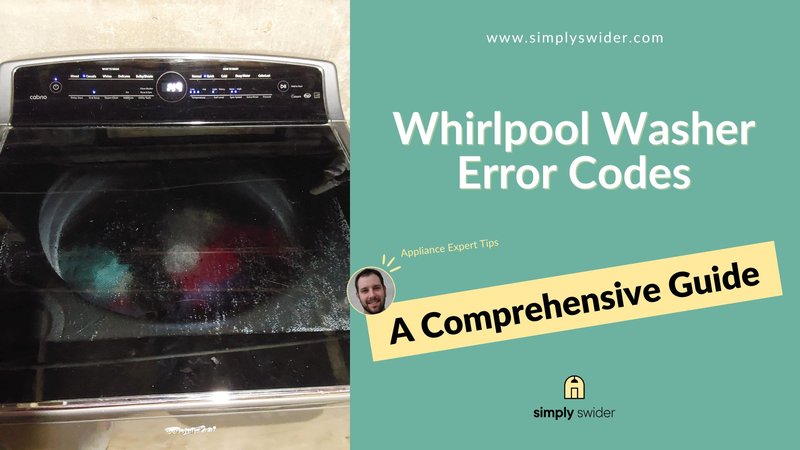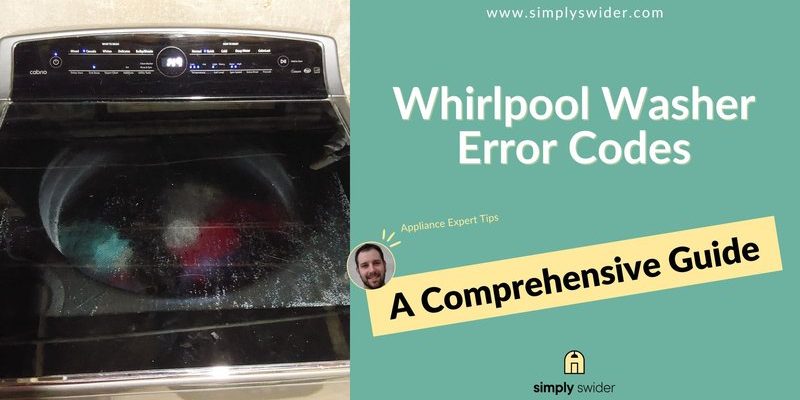
Imagine your washing machine as a well-choreographed dance routine. Everything needs to flow together seamlessly; the water fills, the drum spins, the soap suds up, and your clothes come out fresh and clean. An error code like LE interrupts this dance, indicating a problem within the rhythm of your appliance. Specifically, the LE code is pointing to an issue related to the washing machine’s motor, which is as crucial to the operation as a conductor is to an orchestra. But don’t worry, understanding what’s causing this hiccup is the first step toward solving it.
Understanding the Motor’s Role and Common Issues
The motor in your washing machine is like a heartbeat that keeps everything moving in sync. It turns the drum, creates the spin cycle, and ensures your clothes are agitated just enough to get clean. When the LE error code appears, it’s often because the motor is experiencing a problem. So, let’s delve into the common causes and how they can disrupt your washer’s performance.
Firstly, one of the most straightforward causes of the LE error is overheating. Imagine working out in a heavy sweater on a hot day. You’d probably get too warm, right? The motor can feel the same way. If your washing machine has been running multiple loads back-to-back without a break, the motor might overheat. An overheated motor simply can’t handle its tasks, leading to that pesky error code. Giving your washer a rest between loads is like letting your body cool down after intense exercise.
Next up, consider the possibility of a rotor position sensor failure. This sensor works like a traffic light for the motor, ensuring all the components are in the right position at the right time. If this sensor malfunctions, it’s like a traffic jam on the highway — nothing moves as it should. The result? Your washing machine will likely stop in its tracks, signaling trouble with that LE error message.
Last but not least, wiring issues can also be a culprit. The wires connecting the motor to the control board are like the nerves in your body, sending signals back and forth. If these wires are damaged or loose, the communication gets scrambled, and the washer doesn’t know how to proceed. It’s like trying to have a conversation over a bad phone line — frustrating and often ineffective. In such cases, inspecting and securing any loose connections or damaged wires could restore harmony.
Detecting and Diagnosing the Problem
Even as beginners, you can take a hands-on approach to diagnosing the error code problem. Begin by considering the easiest explanation: an overworked motor. If you’ve recently overloaded the washing machine or run several cycles in quick succession, giving the motor a break might just do the trick. Turn off the machine and let it sit for about 30 minutes to cool down. Restart it afterward to see if the error clears.
If overheating isn’t the issue, it might be time to check the rotor position sensor. This involves a bit of familiarity with your washing machine’s inner workings, but it’s not as daunting as it sounds. You’d need to consult the machine’s manual to locate the sensor, which is generally attached to the motor itself. If you notice any visible signs of damage or disconnection, replacing or re-securing the sensor could resolve the problem.
For those who are comfortable with a bit more troubleshooting, checking the wiring could be your next step. This is a bit like playing detective, looking for any loose or frayed connections. Again, referring to your user manual can help you identify key wiring areas. If you spot an issue, sometimes simply tightening a connection or replacing a worn wire can bring your machine back to life.
Long-term Solutions and Prevention
After resolving the immediate occurrence of the LE error, it’s wise to consider how you can prevent it from happening in the future. Prevention often starts with understanding and respecting the load capacity of your washing machine. Overloading is like asking a horse to carry too heavy a burden — it just doesn’t go well. Familiarize yourself with the manufacturer’s guidelines on load limits to avoid unnecessary strain on the motor.
Regular maintenance checks can also go a long way in keeping your washer running smoothly. Think of it like taking your car in for an oil change. It’s about catching small problems before they turn into big headaches. Every few months, spend some time inspecting the hoses, the drum, and the electrical connections. This preemptive care can keep everything in top shape and spare you from more significant repairs down the line.
Finally, consider your washing habits. Regularly running your machine with hot water cycles and using high spin speeds can wear down the motor faster. Aim for a balanced approach — vary your cycle types and let the washer rest between intensive use. This not only extends its life but can also keep it working effectively without constant disruptions.
In conclusion, while the Whirlpool washing machine error code LE might seem intimidating, understanding its causes and solutions can empower you to keep your appliance in good working order. By treating your washing machine with a bit of care and attention, you can ensure it serves you well for years to come. Remember, a well-maintained washer means fresh laundry without the hassle!
